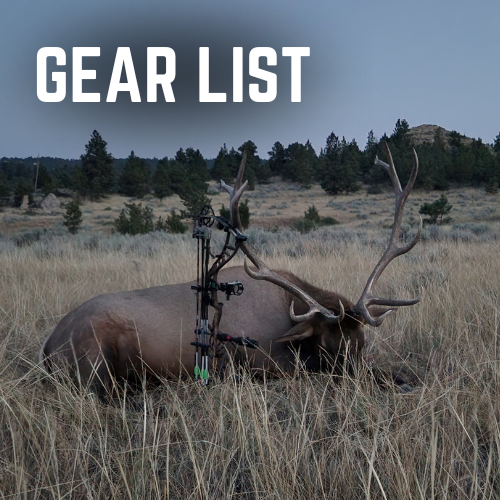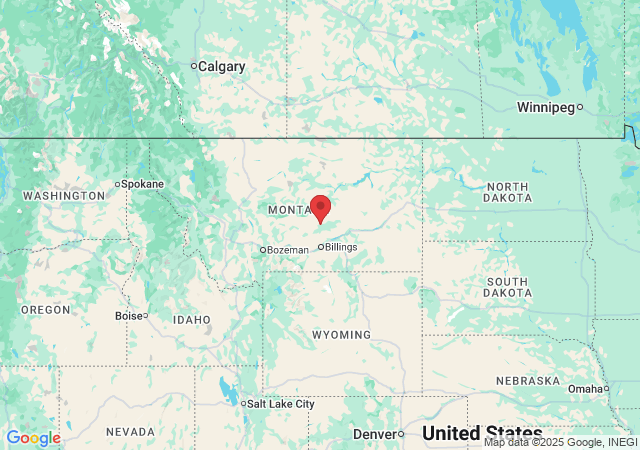



Rifle Hunts
RECOMMENDED ITEMS
Rain gear or waterproof/repellent outerwear
Warm outerwear including Jacket/Parka and long underwear for cold snaps
Light or mid weight coat, sweatshirt and/or vest – in case of a warm snap
400 sq. in Hunter Orange vest
Extra socks
Binoculars
Range finder
Camera
Waterproof boots or Muck style boots
Regular hiking boots
Gloves
House shoes
Personal scent free toiletries and medications
Flashlight
Small quiet day pack or backpack
Hunting licenses and permits (don’t forget your deer or elk permit!)
Shooting sticks
Rifle and cartridges
Several large coolers for any game harvested.
Additional Hunt Considerations
Make sure all your hunting clothes and rain gear are made of quiet material like wool or fleece. Our weather is generally mild during the early rifle season but can change very quickly. Prepare for most situations, and expect temperatures from 60 degrees F to 0 degrees F. We suggest dressing in layers (light to medium weight) so that you can maintain a constant body temperature. Shed layers if you heat up and add layers if you get cold. Take the time to break in all hunting footwear. Foot injuries can severely affect your hunt in many aspects.
Expect shots in the 100 to 300-yard range. Shoot under all conditions and angles. Become intimately familiar with your rifle and practice shooting from prone, sitting and standing positions including off of shooting sticks. Typically, our guides carry shooting sticks, but they aren’t always available when the shot arises. We have had shots missed because of unusual shooting positions and angles not typically encountered at most rifle ranges. Practice at longer distances and closer shots become much easier, especially with adrenaline, nerves and big antlers in view! Also be sure to practice shooting while dressed in your hunting clothes on at least a few occasions.
Archery Hunts
RECOMMENDED ITEMS
Rain gear
Long johns (just in case we get a cold snap)
Extra socks
Binoculars
Range finder
Camera
Extra release
Camouflage clothing - tops and bottoms
Black long sleeve t-shirt for blind hunting
Light weight coat, sweatshirt and/or vest - camo
Mid weight coat - camo
Water proof boots (rubber knee boots work great and are scent free)
Regular hiking boots
Gloves (lightweight for early season warm temps)
House shoes
Personal scent free toiletries
Any medications you may need
Flashlight
Small quiet day pack or backpack
Insect repellant (ThermaCell's seem to work well)
Hunting licenses and permits
Archery gear and SHARP BROADHEADS plus a few extra heads and one to practice with
Large coolers for game and clean clothes for the trip home
Additional Hunt Considerations
Make sure all your hunting clothes and rain gear are made of quiet material like wool or fleece. Our weather is generally mild during the archery season but can change very quickly. Try to prepare for most situations, and temperatures from 30 degrees F to 70 degrees F. Later in the archery season (October hunts) can see temps near 0 degrees F but that’s fairly rare. We suggest dressing in layers (light to medium weight) so that you can maintain a constant body temperature. Shed layers if you heat up and add layers if you get cold. Take the time to break in all hunting footwear. Foot injuries can severely affect your hunt in many aspects.
We will be shooting under all conditions and angles, both standing up and from your knees. Quite a few shots are missed because of unusual shooting positions and angles not typically encountered at most archery ranges and shops. Be proficient with your bow out to 50 yards. Practice at longer ranges and closer shots become much easier, especially when adrenaline and nerves kick in with big racks in view! Be sure to practice shooting with all hunting clothes on. Make sure no articles of clothing are in the way, or the bow is being held different because of heavy clothes and thick sleeves. Extremely sharp broadheads are a must! As arrows are removed and replaced into a quiver the blades get dulled. The last thing you or your guide want is that hard-earned trophy to get away due to dull broadheads. Razor sharp heads slice versus dull heads that rip. Razor sharp, clean cuts do not coagulate, or scab over easily so check the sharpness of your heads on a regular basis during the hunt.
Rifle Hunts
RECOMMENDED ITEMS
Rain gear or waterproof/repellent outerwear
Warm outerwear including Jacket/Parka and long underwear for cold snaps
Light or mid weight coat, sweatshirt and/or vest – in case of a warm snap
400 sq. in Hunter Orange vest
Extra socks
Binoculars
Range finder
Camera
Waterproof boots or Muck style boots
Regular hiking boots
Gloves
House shoes
Personal scent free toiletries and medications
Flashlight
Small quiet day pack or backpack
Hunting licenses and permits (don’t forget your deer or elk permit!)
Shooting sticks
Rifle and cartridges
Several large coolers for any game harvested.
Additional Hunt Considerations
Make sure all your hunting clothes and rain gear are made of quiet material like wool or fleece. Our weather is generally mild during the early rifle season but can change very quickly. Prepare for most situations, and expect temperatures from 60 degrees F to 0 degrees F. We suggest dressing in layers (light to medium weight) so that you can maintain a constant body temperature. Shed layers if you heat up and add layers if you get cold. Take the time to break in all hunting footwear. Foot injuries can severely affect your hunt in many aspects.
Expect shots in the 100 to 300-yard range. Shoot under all conditions and angles. Become intimately familiar with your rifle and practice shooting from prone, sitting and standing positions including off of shooting sticks. Typically, our guides carry shooting sticks, but they aren’t always available when the shot arises. We have had shots missed because of unusual shooting positions and angles not typically encountered at most rifle ranges. Practice at longer distances and closer shots become much easier, especially with adrenaline, nerves and big antlers in view! Also be sure to practice shooting while dressed in your hunting clothes on at least a few occasions.
Archery Hunts
RECOMMENDED ITEMS
Rain gear
Long johns (just in case we get a cold snap)
Extra socks
Binoculars
Range finder
Camera
Extra release
Camouflage clothing - tops and bottoms
Black long sleeve t-shirt for blind hunting
Light weight coat, sweatshirt and/or vest - camo
Mid weight coat - camo
Water proof boots (rubber knee boots work great and are scent free)
Regular hiking boots
Gloves (lightweight for early season warm temps)
House shoes
Personal scent free toiletries
Any medications you may need
Flashlight
Small quiet day pack or backpack
Insect repellant (ThermaCell's seem to work well)
Hunting licenses and permits
Archery gear and SHARP BROADHEADS plus a few extra heads and one to practice with
Large coolers for game and clean clothes for the trip home
Additional Hunt Considerations
Make sure all your hunting clothes and rain gear are made of quiet material like wool or fleece. Our weather is generally mild during the archery season but can change very quickly. Try to prepare for most situations, and temperatures from 30 degrees F to 70 degrees F. Later in the archery season (October hunts) can see temps near 0 degrees F but that’s fairly rare. We suggest dressing in layers (light to medium weight) so that you can maintain a constant body temperature. Shed layers if you heat up and add layers if you get cold. Take the time to break in all hunting footwear. Foot injuries can severely affect your hunt in many aspects.
We will be shooting under all conditions and angles, both standing up and from your knees. Quite a few shots are missed because of unusual shooting positions and angles not typically encountered at most archery ranges and shops. Be proficient with your bow out to 50 yards. Practice at longer ranges and closer shots become much easier, especially when adrenaline and nerves kick in with big racks in view! Be sure to practice shooting with all hunting clothes on. Make sure no articles of clothing are in the way, or the bow is being held different because of heavy clothes and thick sleeves. Extremely sharp broadheads are a must! As arrows are removed and replaced into a quiver the blades get dulled. The last thing you or your guide want is that hard-earned trophy to get away due to dull broadheads. Razor sharp heads slice versus dull heads that rip. Razor sharp, clean cuts do not coagulate, or scab over easily so check the sharpness of your heads on a regular basis during the hunt.




